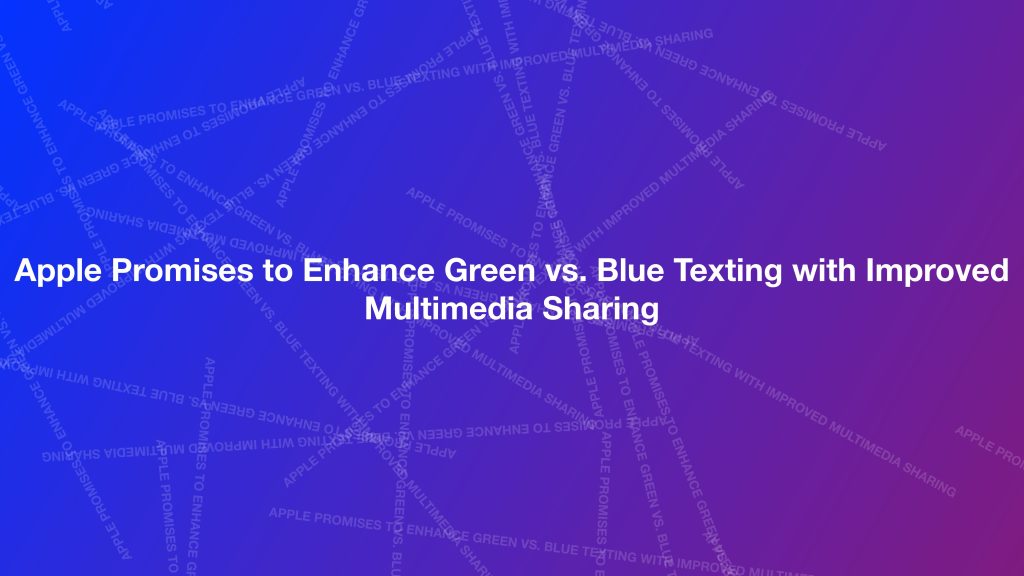In a long-awaited move, Apple has announced that it will finally adopt rich communication services (RCS) technology for iPhone and Android users next year. This exciting development is set to enhance the texting experience by providing higher quality photos and videos between the two platforms, improving group messaging reliability, and introducing features such as read receipts and location sharing within messaging threads.
RCS, often referred to as the modern cousin of short message service (SMS), is a technology that facilitates advanced messaging capabilities beyond the traditional SMS format. Its adoption by Apple is a significant step towards bridging the gap between iPhone and Android users, who have long endured frustrations with cross-platform texting.
One of the conspicuous differences in messaging experiences for iPhone and Android users has been the color of message bubbles. While iPhone messages appear in blue thanks to iMessage, texts from Android or non-iPhone users display in green. Unfortunately, the green bubble has often become synonymous with a subpar texting experience, leaving iPhone users feeling left out. However, with the introduction of RCS, the green bubble will no longer denote poor functionality. Instead, it will signify when RCS technology is being utilized.
It’s important to note that RCS will work alongside iMessage, which Apple promises will remain the top-notch and secure messaging experience for its loyal users. This integration ensures that iMessage’s exceptional features, such as end-to-end encryption, will not be compromised.
The decision to adopt RCS marks a significant shift in Apple’s stance on this issue. Last year, at the Code Conference, Apple’s CEO, Tim Cook, dismissively responded to a user’s complaint about video sending difficulties by saying, “Buy your mom an iPhone.” This statement clearly indicated that Apple had no intention of accommodating Android users’ frustrations. However, with increasing pressure from competitors like Google and Nothing, as well as regulatory factors such as the European Union’s Digital Markets Act, Apple seems to have changed its tune.
According to Caitlin Seeley George, the campaigns and managing director for Fight for the Future, a nonprofit digital rights group, Apple’s adoption of RCS is a positive sign, suggesting that the company is finally listening to its users. This move will also provide additional benefits for iPhone users, allowing them to see typing indicators and message delivery confirmations, features that Android users have enjoyed for years.
Google had long been an advocate for RCS adoption, with the company launching the “Get the Message” campaign last year. This campaign featured a video that humorously mocked Apple’s outdated messaging technology. Google’s senior vice president, Hiroshi Lockheimer, expressed his frustration with Apple’s reluctance to embrace RCS, stating that it holds back both the industry and the user experience for Android users as well as Apple’s own customers.
Apple’s decision to integrate RCS into its messaging system is undoubtedly a win for everyone involved. It not only addresses the long-standing frustrations of cross-platform texting but also brings enhanced functionalities to iPhone users. As 2022 approaches, we can look forward to a seamless and enriched messaging experience, bringing iPhone and Android users closer together than ever before.




